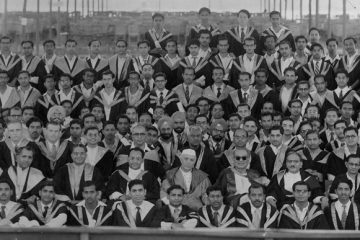
In May 2018, IIT Kharagpur set up India’s pioneering Bioelectronics Innovation Laboratory to develop futuristic battery-free implantable medical devices for the treatment of brain, nerve, muscle or spinal cord disorders that are untreatable by using standard medical practices. These medical devices will go a long way in providing affordable and reliable medical solutions. The laboratory will facilitate energy-efficient electronic system development, biocompatible packaging, bio-reliability assessment and animal testing rooms as a unified platform for an end-to-end intelligent medical system development.
Prof. Sudip Nag of the Department of Electronics and Electrical Communication Engineering of IIT Kharagpur is heading the initiative. The present line of research targets subjects with blindness, limb paralysis, sensory-motor dysfunction, cognition-loss, Parkinson’s tremor, epileptic seizures, and even memory loss. The lab is also in the process of setting up collaborations with several hospitals and institutes in India and abroad. Recently, a Common Research and Technology Development Hub (CRTDH) on technologies for affordable healthcare has been set up at IIT Kharagpur that will be supporting the growth of precision manufacturing of innovative technologies through MSMEs. The bioelectronics lab will also be contributing to this venture. Here is Prof. Nag on bioelectronics and its future prospects:
What is bioelectronics?
Bioelectronics is a new and emerging field in engineering where we are using novel and state-of-the-art electronic technology, medical science, and fusing them together to bring out innovative solutions in health care. Such solutions will help in the futuristic treatment of diseases that are otherwise not possible through standard medical practices or surgery.
Why is bioelectronics such an important field today?
It is very essential and important because we don’t have medical treatments available for certain critical diseases and conditions, such as brain damage, stroke-induced paralysis, and spinal cord injury to name a few. These do not have a direct solution in terms of standard medicine and surgery. In bioelectronics, we can use electronic solutions to bypass or restore certain functions in the body. We cannot cure blindness unless it is in the early stage. There can be no way to restore vision. There is no medicine for it. But bioelectronics can bring in electronic (or artificial) ways to substitute the function of natural organs at a coarse level.
Can you tell us about some actual uses of bioelectronics in restoring vision?
Of course. For example, we can put little mobile phone cameras outside the body, and those cameras can acquire external image signals; and then through the electronic antenna or coils, we can transfer the information to a chip that has been surgically implanted in the eyeball. This chip decodes the information and activates the remaining part of the eye. Remember, a blind person typically experiences a loss of vision due to partial damage to critical portions in the visual pathway to the brain. In other words, blindness can occur due to damage to specific portions in the eye, and not the entire eye. For example, there could be a corneal problem, a retinal tissue degeneration, or optic nerve damage, but hardly more than one are affected simultaneously in a majority of the cases. Using Bioelectronics we can target the diseased portion and replicate or bypass the damaged portion by using electronic waves. In corneal blindness, the eye is functional except for one layer of tissue, which blocks the light to enter into the eye. We are trying to bypass the cornea, put a chip inside that will project the light inside.
How can bioelectronics help in cases of paralysis?
Bioelectronics can also be used in the case of stroke-induced paralysis. The brain has several blood vessels and sometimes they rupture due to high blood pressure or degeneration of biological membranes. Stroke is caused due to the spillage of blood in the brain. The toxic chemicals carried by the blood affect neurons in the brain and possibly kill them in mass. However, despite a ruptured blood vessel, neural connectivity is present at a macro scale. The magnitude of the paralysis depends on the size of the clot or spillage of blood. Sometimes a paralysis is irreversible. And this is where bioelectronics comes into the picture.
For example, in the case of paralysis in the leg. When we walk, there is a certain rhythm of movement. One leg is advanced, the other is lifted up and gradually comes down. There is a synchronization of the limb movements of which we are not even conscious. This pattern gets distorted or dysfunctional after a stroke in the brain. However, the limbs do not become non-functional because of a stroke. Only the communication to the limbs from the brain is hampered.
Suppose one leg is affected by paralysis. In this case, we put sensors in the good leg and embed actuators in the damaged leg. The leg with which the brain can communicate is the sensor leg. The one that is paralysed is called the actuator leg. When we inject controlled electrical pulses with minute electrical shocks into concerned muscles, and this injection occurs in a certain sequence, it can mimic the actual walking pattern.
How far have these projects progressed?
So far as the Bionic Eye project is concerned, we have already started the chip development and we have a collaboration with Shankara Nethralaya in Chennai. The doctors are very enthusiastic about the solution.
So far as the other project is concerned, we have developed electrical stimulator devices that can go inside the body and we are now working on making them power-efficient. We target to reduce the dependence on batteries. Batteries, even those in pacemakers, have to be recharged or replaced along with the entire device. Therefore, instead of the battery, we thought of using modern wireless power transfer and super-capacitors or ultra-capacitors, which can charge and discharge for an infinite number of times virtually. But here there is a problem. The capacitors charged and discharged fast. This means we had to create devices that require very little power to operate and do not allow quick discharge.
We are thus trying to develop a system whereby we can put a power band on top the body, whereas the implant is located inside the body and, in a matter of minutes, we can completely charge the implantable super-capacitor. We have to make sure that the circuit or the electronics that is performing its task inside the body should consume very little power – in the range of nano-Watts to micro-Watts. In our lab, we are using electromagnetic and electrostatic energy transfer strategies to charge up the super-capacitors. There is no battery in our devices and all of our solutions for implantables are battery free. Even if there is a requirement of battery, we want to put it outside the body.
So resolving the problem of batteries is very important to bioelectronics, right?
Absolutely yes. We are working on energy transfer and harvesting schemes, and not just batteries. We are eliminating the use of batteries from an implant, which will possibly create a new wave in future. It is a combination of energy transfer, energy harvesting, and minimizing power consumption. These are our main focuses and prime targets to advance the field. In terms of biology, the choice of materials, parameters, bio-compatible coating strategies, and animal trials are very important. That is why we call it bioelectronics.
How is the Bioelectronics Innovation lab thinking of contributing to the Common Research and Technology Hub (CRTDH) recently set up at IIT Kharagpur?
CRTDH is a unique program that is getting realized at IIT Kharagpur through the supports received from DSIR, Government of India, and B.C. Roy Super-speciality Hospital. The program will particularly benefit Micro Small Medium Scale (MSME) industries in West Bengal and India, which are interested to commercialize affordable health-care related prototypes and technologies that are available at IIT Kharagpur. Bioelectronics Innovation Lab is going to contribute directly and immensely to this program through supports related to technology transfer, product validation, certification assistance process, and market placement under the aegis of the Institute.
Photograph and Video: Arnab Moitra
Banner design: Suman Sutradhar



